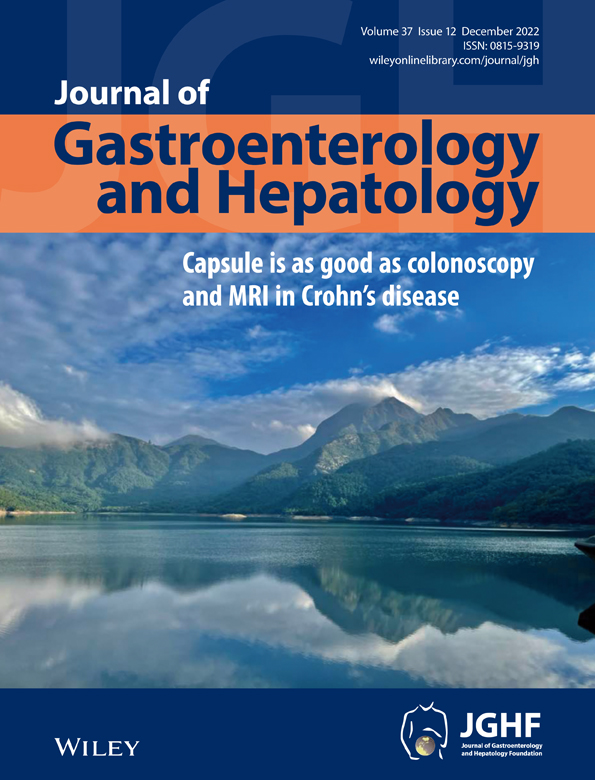Endoscopic radial incision versus endoscopic balloon dilation as initial treatments of benign esophageal anastomotic stricture
Declaration of conflict of interest: No authors have any conflicts of interest.
Author contribution: All the authors made substantial contributions to the conception or design of the work (Quan-Lin Li, MD, and Ping-Hong Zhou, MD, FASGE); the acquisition and analysis (Mei-Dong Xu, MD; Shi-Yao Chen, MD; Yun-Shi Zhong, MD; Yi-Qun Zhang, MD; Wei-Feng Chen, MD; Li-Li Ma, MD; Wen-Zheng Qin, MD; Jian-Wei Hu, MD; Ming-Yan Cai, MD; Li-Qing Yao, MD), and interpretation of data for the work (Zhao-Chao Zhang, MD; Jia-Qi Xu, MD; and Jia-Xin Xu, MD); drafted (Zhao-Chao Zhang, MD; Jia-Qi Xu, MD; Jia-Xin Xu, MD); the work was revised critically for important intellectual content (Quan-Lin Li, MD; Ping-Hong Zhou, MD, FASGE; Mei-Dong Xu, MD; Shi-Yao Chen, MD; Yun-Shi Zhong, MD; Yi-Qun Zhang, MD; Wei-Feng Chen, MD; Li-Li Ma, MD; Wen-Zheng Qin, MD; Jian-Wei Hu, MD; Ming-Yan Cai, MD; and Li-Qing Yao, MD); and all gave final approval of the version to be published and agreed to be accountable for all aspects of the work in ensuring that questions related to the accuracy or integrity of any part of the work are appropriately investigated and resolved.
Financial support: This study was supported by grants from the National Key R&D Program of China (2019YFC1315800), National Natural Science Foundation of China (82170555), Shanghai Rising-Star Program (19QA1401900), and Major Project of Shanghai Municipal Science and Technology Committee (19441905200).
Guarantor of the article: Ping-Hong Zhou is accepting full responsibility for the conduct of the study. He had access to the data and have control of the decision to publish.
Abstract
Background and Aim
We aim to evaluate the efficacy and safety of endoscopic radial incision (ERI) versus endoscopic balloon dilation (EBD) treatment of naïve, recurrent, and refractory benign esophageal anastomotic strictures.
Methods
One hundred and one ERI, 145 EBD, and 42 ERI combined with EBD sessions were performed in 136 consecutive patients with benign esophageal anastomotic stricture after esophagectomy at Zhongshan Hospital from January 2016 to August 2021. Baseline characteristics, operational procedures, and clinical outcomes data were retrospectively evaluated. Parameters and recurrence-free survival (RFS) were compared between ERI and EBD in patients with naïve or recurrent or refractory strictures. Risk factors for re-stricture after ERI were identified using univariate and multivariate analyses.
Results
Twenty-nine ERI versus 68 EBD sessions were performed for naïve stricture, 26 ERI versus 60 EBD for recurrent strictures, and 46 ERI versus 17 EBD for refractory stricture. With comparable baseline characteristics, RFS was greater in the ERI than the EBD group for naïve strictures (P = 0.0449). The ERI group had a lower 12-month re-stricture rate than the EBD group (37.9% vs 61.8%, P = 0.0309) and a more prolonged patency time (181.5 ± 263.1 vs 74.5 ± 82.0, P = 0.0233). Between the two interventions, recurrent and refractory strictures had similar RFS (P = 0.0598; P = 0.7668). Multivariate analysis revealed initial ERI treatment was an independent predictive factor for lower re-stricture risk after ERI intervention (odds ratio = 0.047, P = 0.001). Few adverse events were observed after ERI or EBD (3.0% vs 2.1%, P = 0.6918).
Conclusions
ERI is associated with lower re-stricture rates with better patency and RFS compared with EBD for naive strictures.




